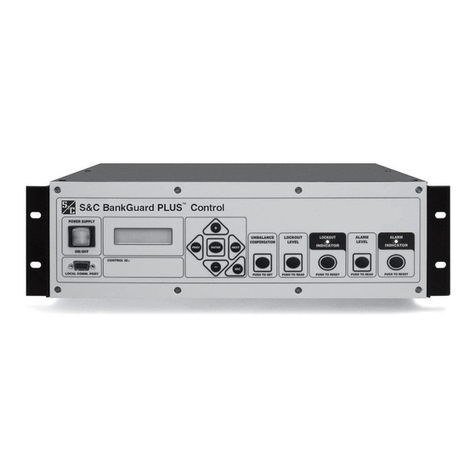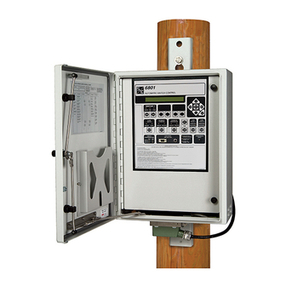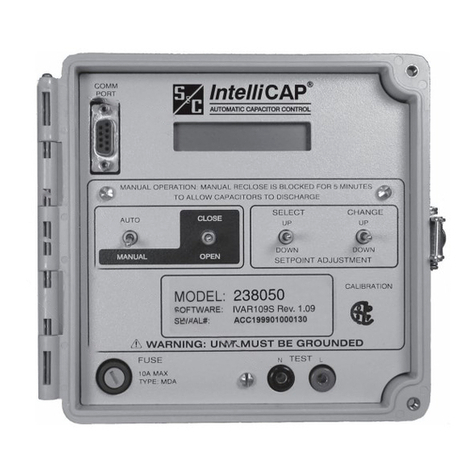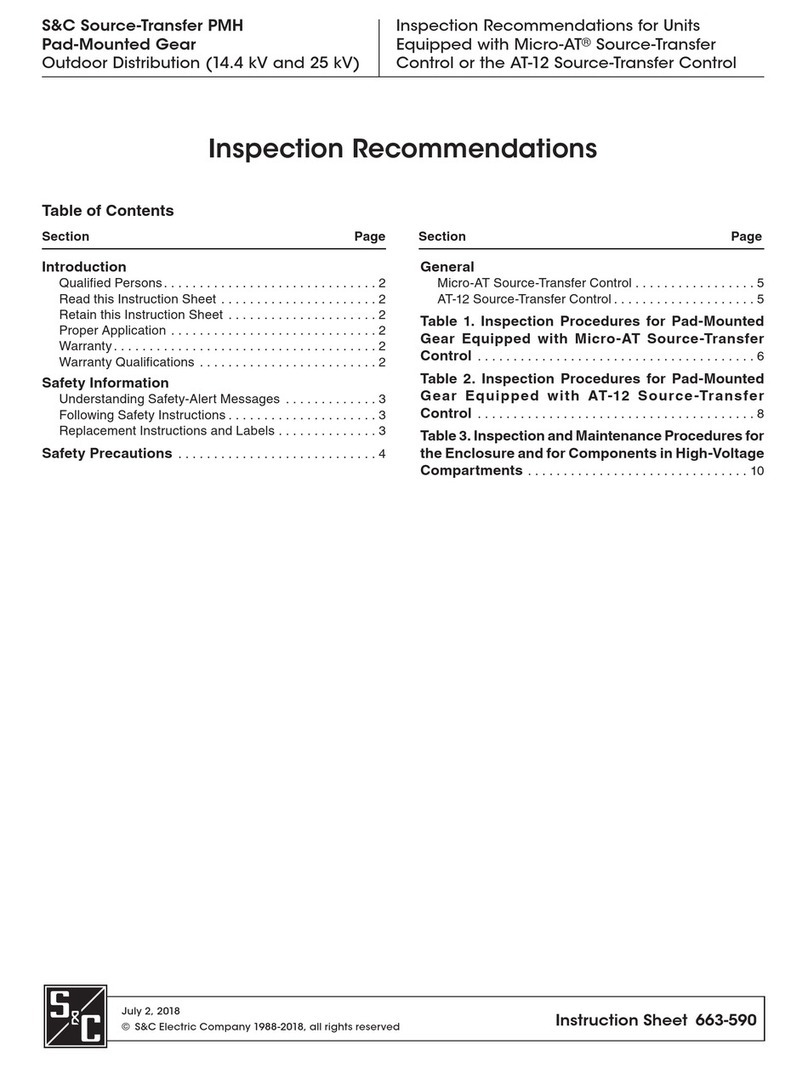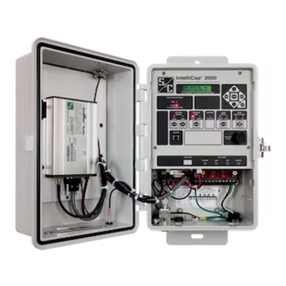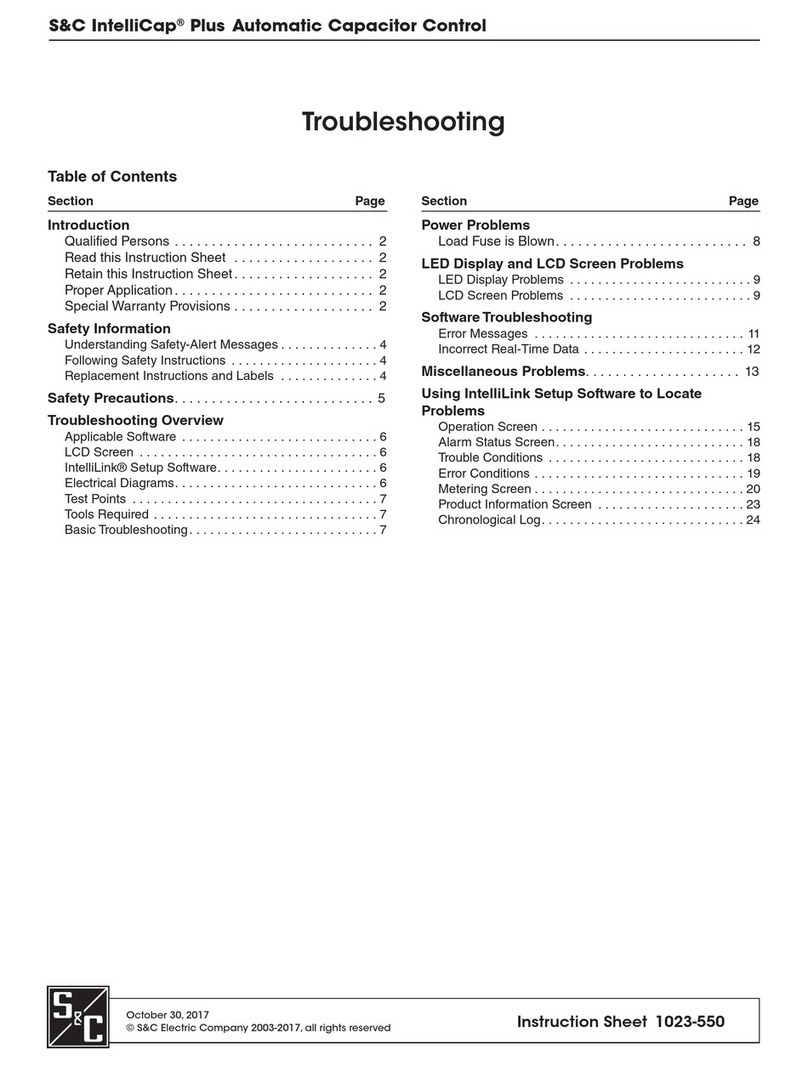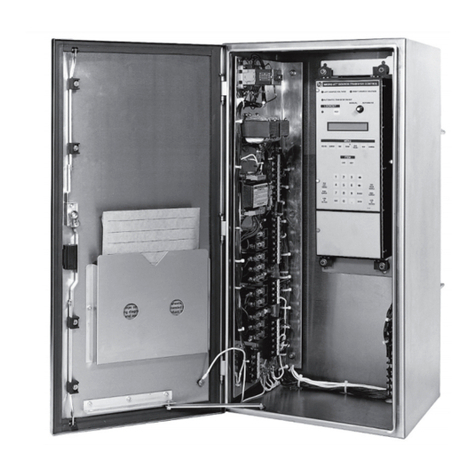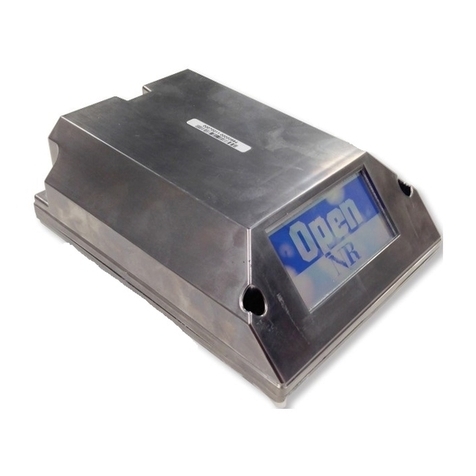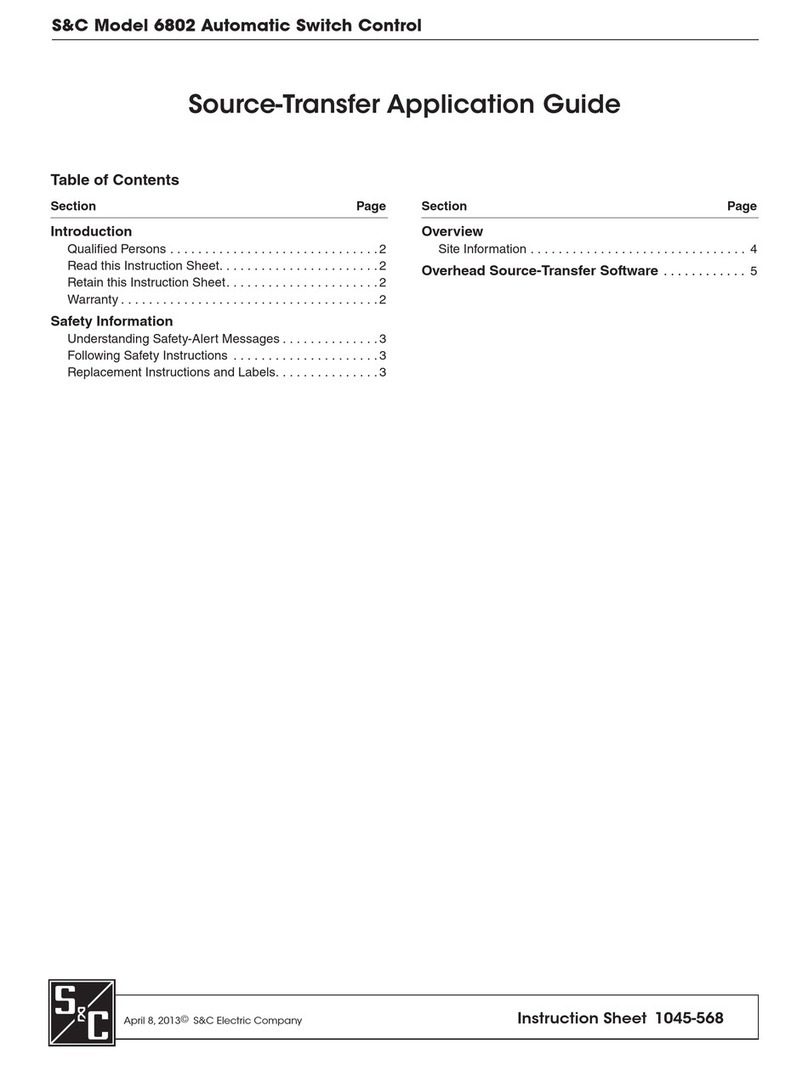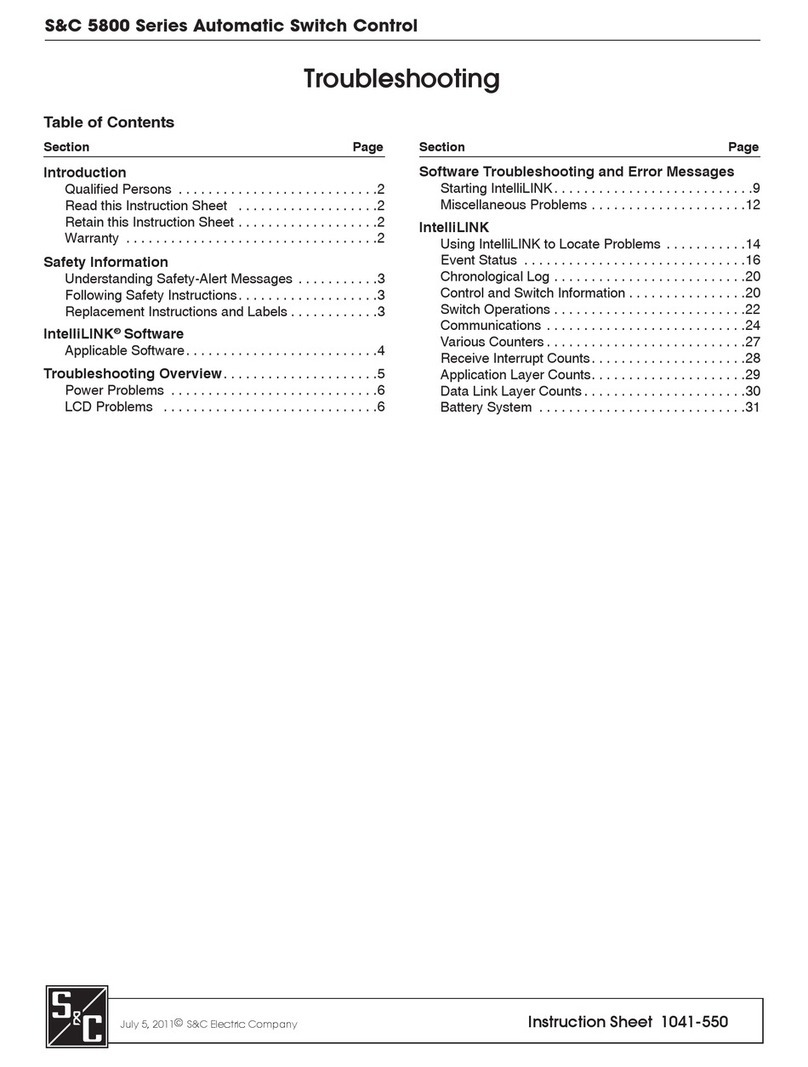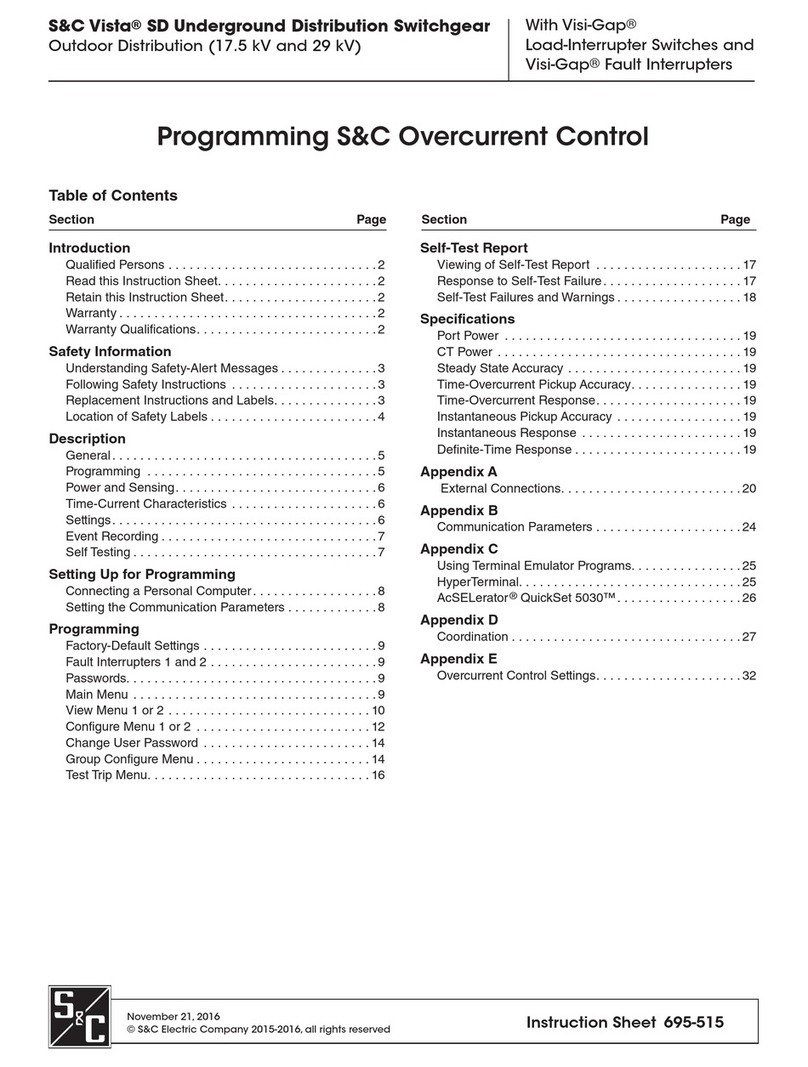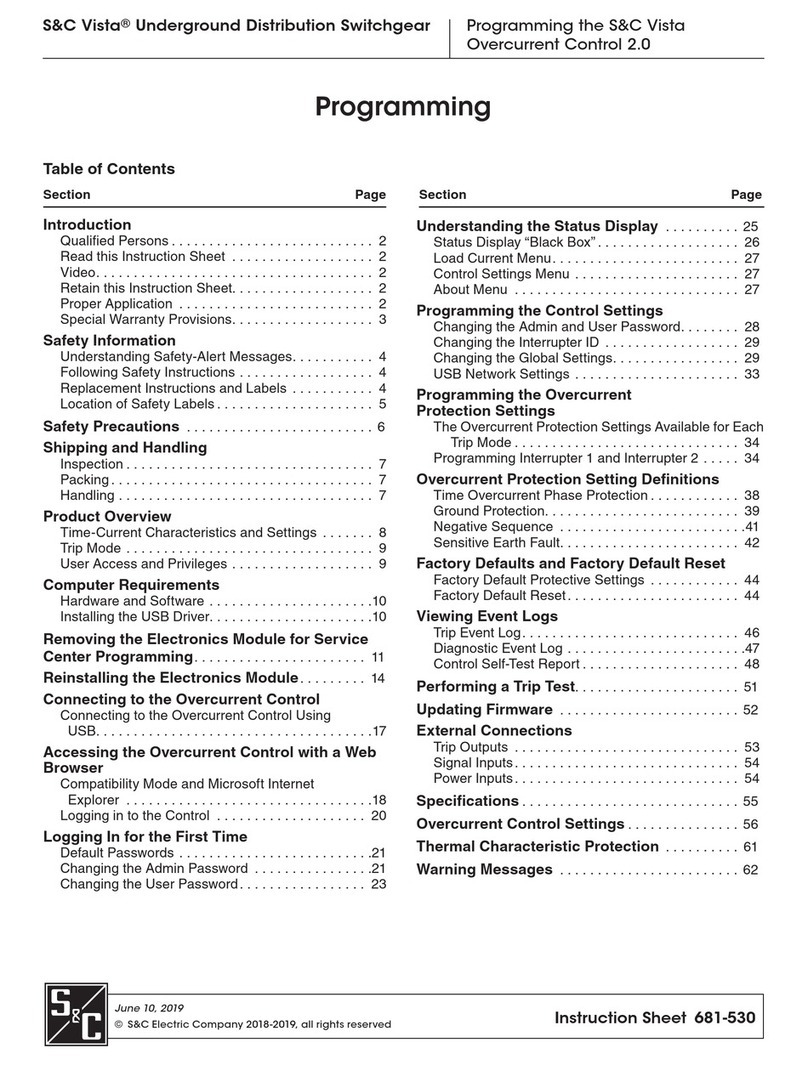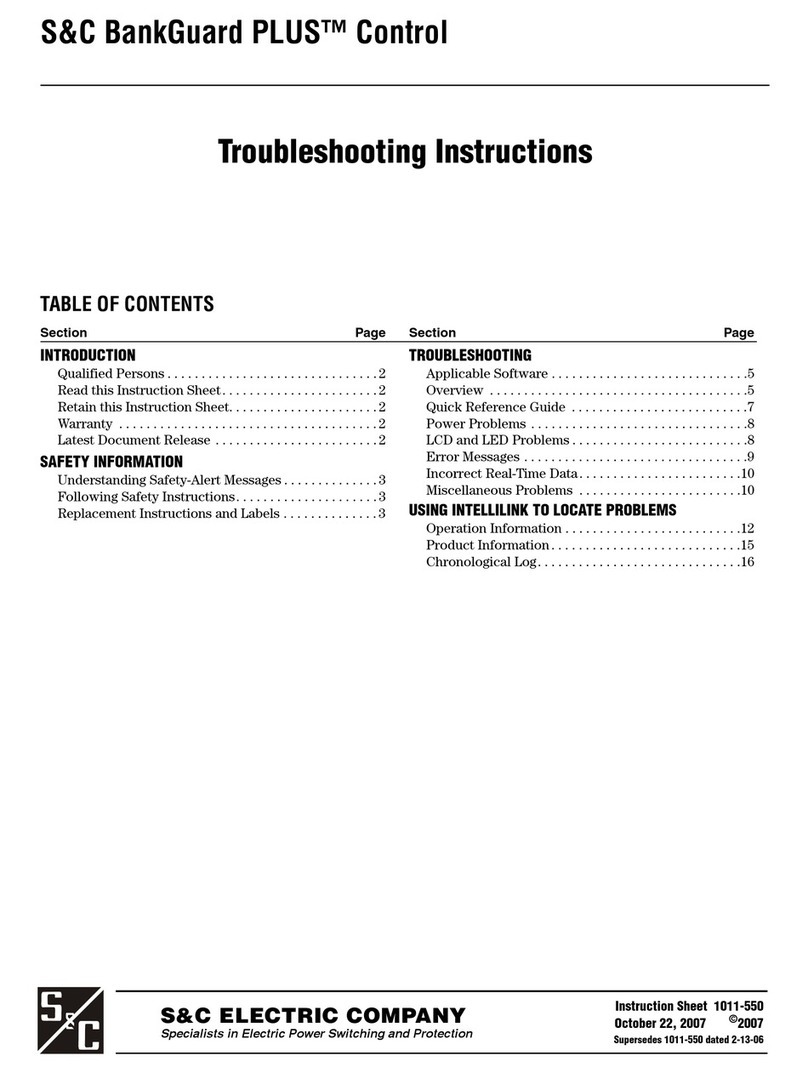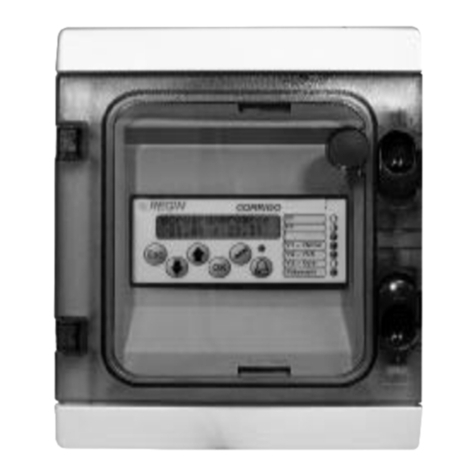
S&C Source-Transfer PMH Pad-Mounted Gear With Micro-AT®Control
Outdoor Distribution (14.4 kv and 25 kv)
S&C ELECTRIC COMPANY
s
663-503 INSTRUCTION SHEET
Page 10 of 35
August 14, 1995
ÇWARNING
MINI-RUPTER SWITCHES
1. To prevent an automatic operation when decoupling
or coupling an operator to a switch, during manual
charging of an operator, or when manually operat-
ing a switch, place the manual/automatic operation
selector switch located on the faceplate of the
Micro-AT Source-Transfer Control in “MANUAL.”
2. Do not perform any switching operations if the
source-transfer control is in the lockout mode as
indicated by illumination of the “LOCKOUT” lamp.
See Figure 2. For such cases, see “Overcurrent-
Lockout Condition” under the “OPERATING
DESCRIPTION” in S&C Instruction Sheet 515-500.
3. If the gear is energized and paralleling of sources is
not permitted, decouple both stored-energy opera-
tors (see “Decoupling” below) to avoid temporary
service interruptions when manually operating
the gear. Switching operations will result in tem-
porary service interruptions if stored-energy oper-
ators are coupled.
4. Due to operating errors, the stored-energy opera-
tor’s quick-make quick-break mechanism may stall
in a partially discharged state. The conditions which
will cause this mechanism to stall, as well as
instructions for restoring the operator to the normal
latched-open condition after a stall, are listed under
“IF OPERATOR STALLS . . .” on page 26.
5. Do not assume that the operator position neces-
sarily indicates the open or closed position of the
Mini-Rupter Switch. Upon completion of an open-
ing or closing operation, check to be sure that the
following conditions exist:
•The operator target (see Figure 1) signals “OPER-
ATOR IN SWITCH-OPEN POSITION” or “OPER-
ATOR IN SWITCH-CLOSED POSITION” to
indicate that the switch operator has moved
through a complete operation.
•The switch-position target (see Figure 1) which
signals “SWITCH OPEN” or “SWITCH CLOSED,”
is in agreement with the operator target.
•The switch position, as verified by visual check
of the switch-blade position, is in agreement with
the switch-position target. A viewing window is
provided in the switch compartment to allow
positive visual verification of switch-blade posi-
tion (see Figure 4).
•The operator target (see Figure 1) signals
“OPERATOR CHARGED” to indicate that the
operator is ready for the next operation.
6. To prevent all electrical and mechanical operations,
padlock the operation selector in the “LOCK POSI-
TION.” This will also prevent motor charging of the
stored-energy operator if system operating proce-
dures require that the quick-make quick-break
mechanism remain discharged—and source voltage
is present.
Decoupling
Decoupling is accomplished using the decoupler handle.
See Figure 5. When decoupled, the stored-energy operator
may be operated without affecting the position of the
associated Mini-Rupter Switch. Moreover, when decou-
pled, the Mini-Rupter Switch is prevented from moving by
a mechanical device which locks the switch drive-shaft.
To decouple the stored-energy operators, first place
the manual/automatic operation selector switch on the
faceplate of the S&C Micro-AT Source-Transfer Control
in “MANUAL.” For each stored-energy operator, grasp
the decoupler handle and press down on the coupled-
position latch to release the handle. Then move the
handle upward to the “DECOUPLED” position. Make
sure that the handle is fully latched in the decoupled
position. While an operator is decoupled, the automatic-
transfer “ready” indicating lamp on the faceplate of the
Micro-AT control will not light—a reminder of the decou-
pled condition. See Figure 2.
Coupling
To couple the stored-energy operators, first place the
manual/automatic operation selector switch on the face-
plate of the Micro-AT control in ”MANUAL.” Then make
sure that the stored-energy operators are in the same
position (open or closed) as their associated Mini-
Rupter Switches by observing the switch-position and
operator targets. See Figure 1. If required, use the
open/close pushbuttons (provided control power is avail-
able) to reposition the operator(s).
For each operator, grasp the decoupler handle and
press down on the decoupled-position latch to release the
handle. Then move the handle downward to the “COU-
PLED” position. Make sure that the handle is fully latched
in the coupled position. An attempt to operate a switch
that is not completely coupled (or decoupled) will cause
the operator mechanism to stall.

